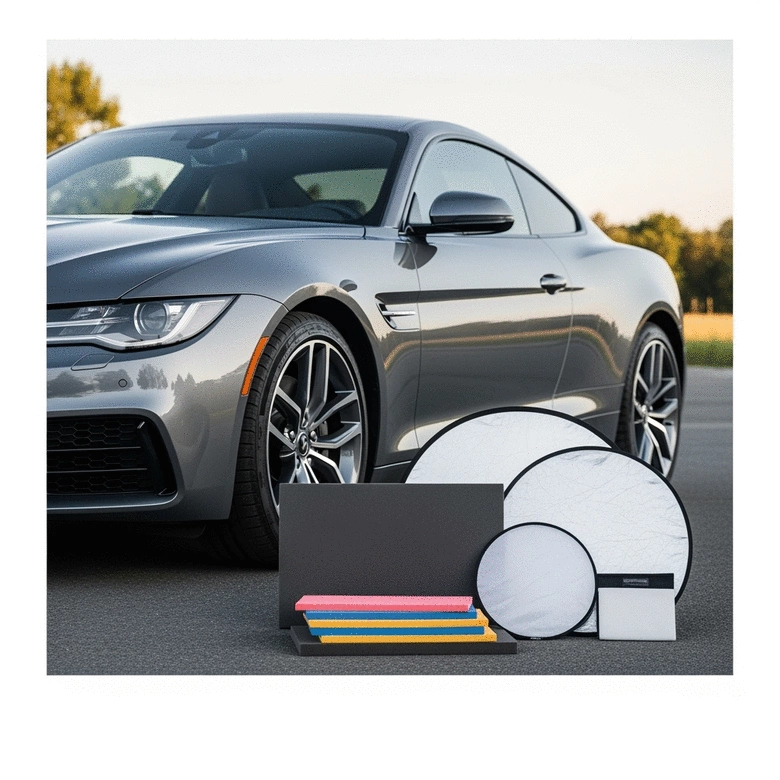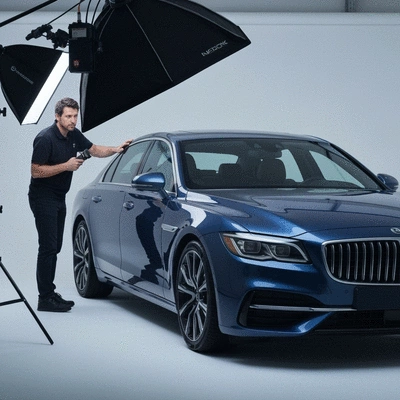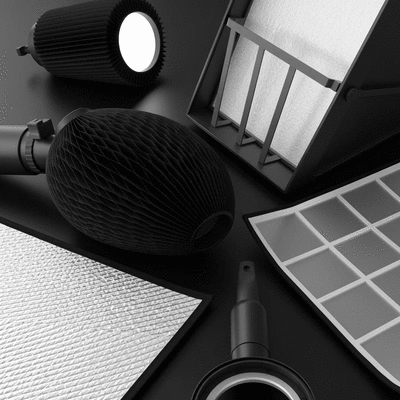Why Light Shaping Matters
- ● Detail Enhancement
- ● Color Accuracy
- ● Emotional Impact
Imagine being able to capture the essence of a car with just the right lighting, transforming each shot into a stunning visual story. In this article, you'll discover how mastering light shaping techniques can elevate your automotive photography and evoke emotions that resonate with your audience.
Transform your car photos with these essential light shaping techniques. Whether you're using professional gear or just your smartphone, understanding these principles can significantly improve your results. For more tips on getting great shots with your mobile device, check out our guide on mastering car photography with an iPhone.
When it comes to capturing stunning car photos, the importance of light shaping cannot be overstated. Proper lighting can elevate an ordinary shot to something extraordinary. Think about how the sunlight glints off the curves of your car or how shadows can create depth and dimension. Without the right light, even the most beautiful designs can fall flat.
In my experience with Everyday Car Photography, I’ve found that understanding and manipulating light is one of the most crucial skills for any automotive photographer. A well-lit photo not only highlights the car's features but can also evoke emotions, telling a story that resonates with viewers. So, let’s dive into why lighting matters and how you can harness it to enhance your shots!
Proper lighting is the backbone of great automotive photography. Without it, your images may lack vibrancy or detail. Here are a few reasons why I emphasize lighting in my tutorials:
Remember, every angle you shoot from and every light source you choose can significantly impact how your car is portrayed. It’s not just about the car; it’s about the story you want to tell through your photography! For more ideas on how to frame your shots, explore our guide on car photography tips for iPhone.
Light shaping techniques can dramatically enhance the details of your car. Using reflectors, diffusers, and simple tools can help you control the quality and direction of light, leading to stunning results. Here are some techniques to consider:
These techniques help you to sculpt the light, accentuating the vehicle's curves and features, making your photos pop! Experimenting with these methods will help you find your unique style and improve your skills.
Both natural and artificial light play significant roles in car photography. Natural light, especially during the golden hour, can create beautiful, soft images that showcase your car in the best light. On the other hand, artificial light can add creativity and control in various shooting scenarios.
As someone who loves sharing tips on mobile photography, I encourage you to experiment with both types of lighting! Each has its strengths, and figuring out which works best for your style can take your car photography to the next level.
To truly make your car photography stand out, consider investing in a portable reflector. Reflectors can dramatically enhance the quality of light hitting your car, especially in harsh sunlight. Positioning a reflector at an angle can help fill in shadows and add a professional touch to your shots without the need for expensive lighting equipment.
Light shaping is crucial for highlighting a car's details, ensuring color accuracy, and evoking specific emotions in your photos. It transforms ordinary shots into extraordinary visual stories.
Key techniques include using reflectors to bounce light and fill shadows, diffusers to soften harsh light, and flags to block unwanted light and minimize glare. These tools help sculpt light to enhance vehicle features.
Natural light, especially during the golden hour, creates warm, inviting tones, while artificial light offers more control for dramatic effects and highlighting specific details. Combining both can lead to unique results.
Foam boards can be used for bouncing and diffusing light. Everyday materials can be repurposed into effective lighting tools, encouraging creativity and resourcefulness.
Experimenting with different light sources, times of day, angles, and combinations allows photographers to develop unique styles, understand light interaction, and continuously improve their craft.
As we've explored throughout this article, mastering light shaping techniques is crucial for capturing stunning car photographs. Foam, reflectors, and DIY solutions are powerful tools in your photography arsenal. Each method has its unique benefits, helping you manipulate light effectively to enhance your images. If you're looking to refine your images further, consider exploring Lightroom tips for stunning car photos.
Here’s a quick recap of the light shaping techniques we've discussed:
By incorporating these techniques, you can bring out the details in your vehicle's design and create visually appealing compositions. Remember, every shot is a chance to experiment and improve your craft!
Experimentation is at the heart of photography! Don’t be afraid to step outside your comfort zone and try new lighting setups. At Everyday Car Photography, I've seen how different angles and lighting techniques can completely transform an image. Whether you're using natural light during golden hour or a DIY softbox made from foam, each approach offers unique possibilities.
Here are some tips to spark your creativity:
Above all, have fun with the process! The more you experiment, the better you'll understand how light interacts with your subject, leading to more striking car photos.
Here is a quick recap of the important points discussed in the article:
At Everyday Car Photography, we empower car enthusiasts to capture stunning, professional-quality images of their vehicles using accessible and affordable methods.
Mobile-First Photography Tips


